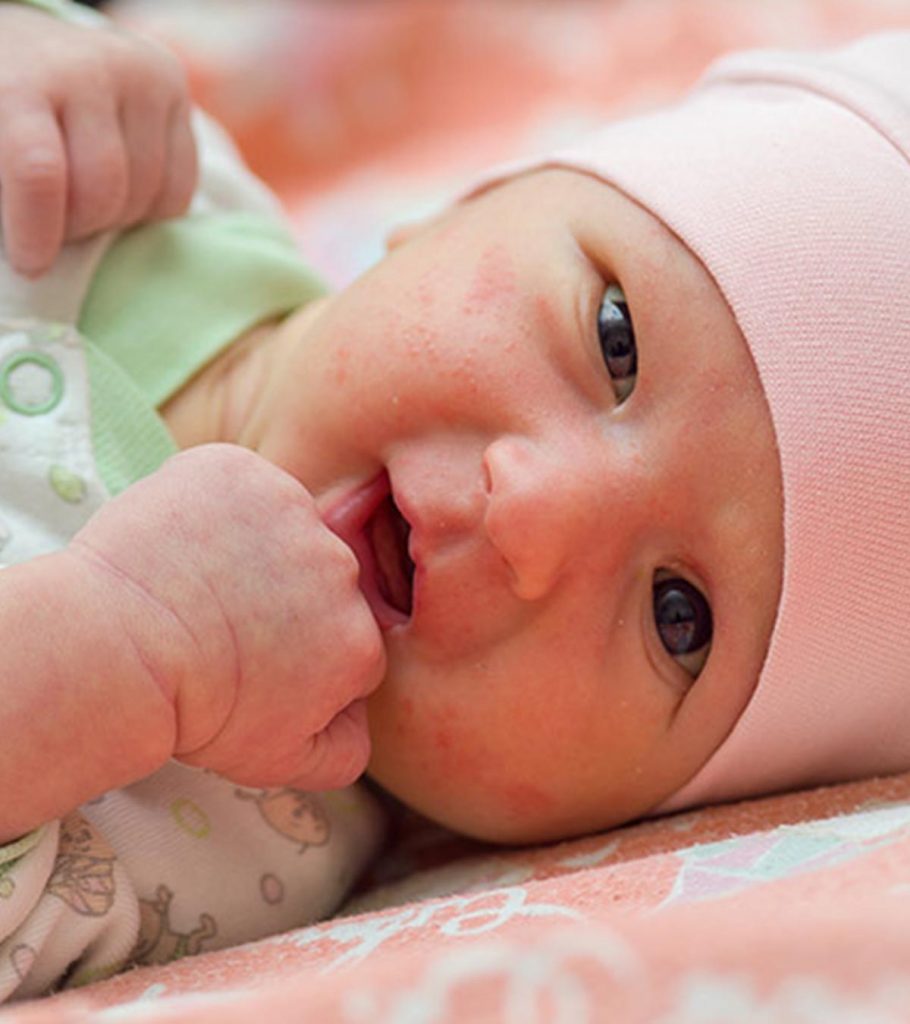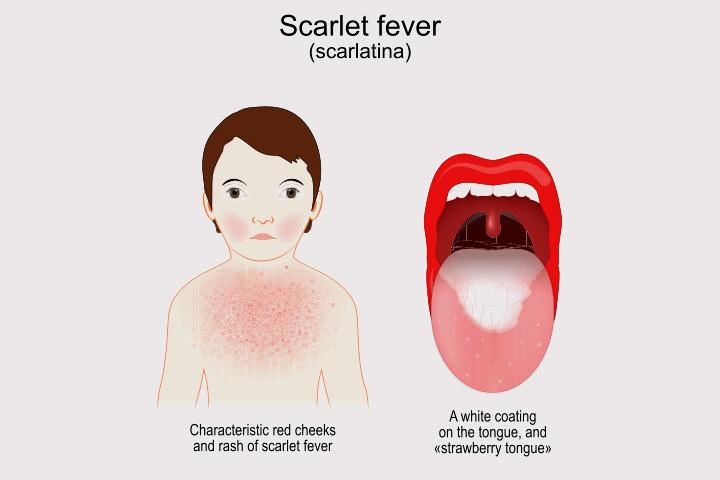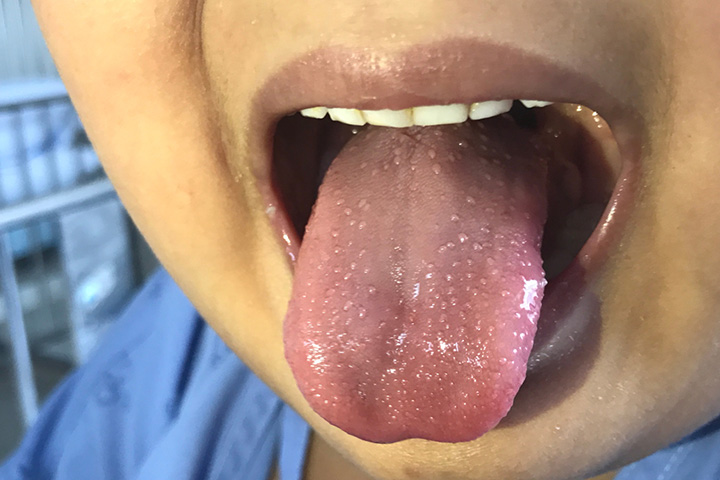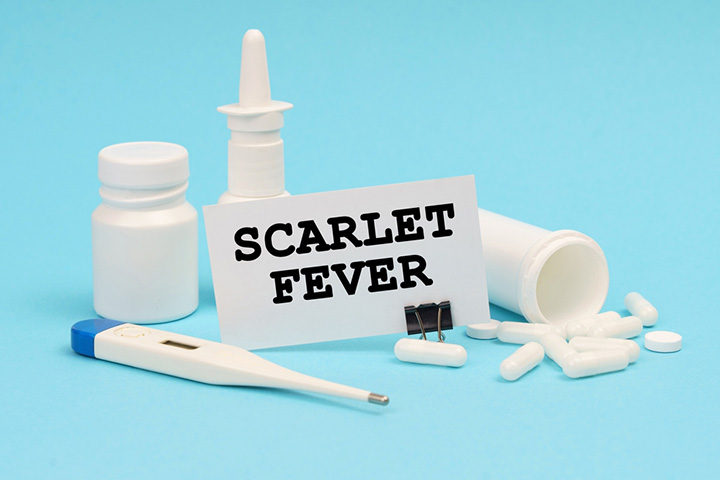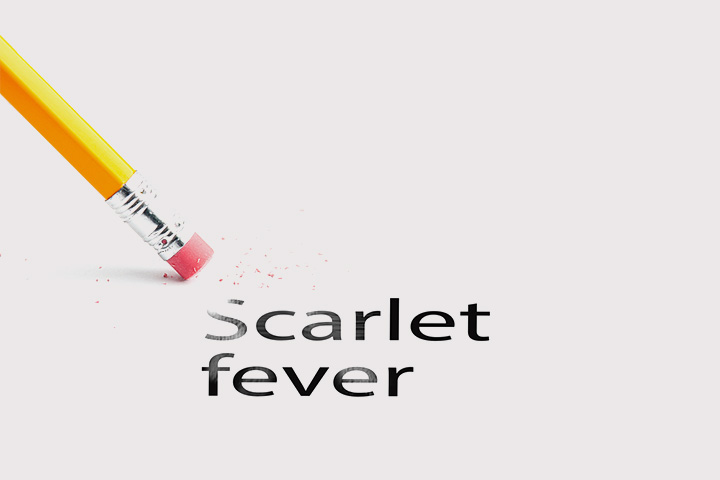If you have a newborn or toddler, you may always be concerned about their health. If you notice red rashes on your baby’s chest, it might be an indication of Scarlet fever or bacterial illness. Scarlet fever in babies and toddlers can occur after having flu-like symptoms, such as a sore throat and fever. While antibiotics may readily treat the condition, you may still have questions regarding the condition, causes, and whether it is harmful or not. This post addresses all of your questions about Scarlet fever in babies, including why the condition occurs, how to recognize it, and what medications your doctor may prescribe for the treatment. You can also find some helpful hints for preventing the spread of fever rashes in babies. However, it is best to consult your doctor once you notice any symptoms in your baby and get them medically treated for the right care.
Is Scarlet Fever Common In Infants?
No. Scarlet fever in babies under one year is rare as they are protected by the immune system components transferred from the mother at birth. However, children between the ages of two and ten years are susceptible to this fever. According to the Institute for Quality and Efficiency in Health Care, scarlet fever affects around five out of 1,000 children annually. Thankfully, it is not dangerous, given the availability of antibiotic medications.
What Causes Scarlet Fever In Babies And Toddlers?
Scarlet fever is an upper respiratory tract infection. The bacterium called group A streptococcus or Streptococcus pyogenes bacteria, causes the condition (1).
The streptococcal bacteria release poisons (toxins), which enter the blood from the infected throat and cause characteristic red rashes. They feel like sandpaper when touched. However, some babies may not develop rashes to Streptococcal infections, as they are not sensitive to the toxin.
It is rare but possible for a strep skin infection like impetigo to develop scarlet fever. But in such a case, the toddler may not have a sore throat.
The milder form of scarlet fever is Scarlatina.
Is Scarlet Fever Contagious?
Scarlet fever is contagious. But it is the strep throat that is contagious and not the rash. Fluids, including saliva, cough, and mucus of the infected person, spread the disease through the air in the form of droplets. The infection could spread even through the sharing of towels, bed linen, and bath clothes or skin-to-skin touch.
If older children in the family are infected, take every possible care to avoid spreading it to your baby. Look out for any symptoms to act quickly.
What Are The Symptoms Of Scarlet Fever?
Scarlet fever results in the rise of body temperature. The rashes show up a day or two after the onset of the first typical symptoms such as fever above 101°F (38.3°C), and sore throat (2).
- Initially, the tongue gets a white coating and has ‘white-strawberry’ appearance. It gradually turns into a bright red tongue, which is also known as a ‘strawberry tongue.’
- Rashes of 1-2mm and bumps emerge, beginning from the throat and spreading downwards. They move to the trunk and legs and arms (extremities).
- Rashes appear throughout the body except for the face. The face could look flushed, and the skin turns white (blanch) when you press the rashes.
- These rashes can be itchy.
- Red streaks may appear if rashes develop on the creases of the body like elbow folds and armpits. These red streaks are called Pastia’s lines.
- Tonsils enlarge and turn tender and red. Other lymph nodes may swell as well.
- Other symptoms are appetite loss, vomiting, nausea, chills, body aches, and a fever with high temperature.
The tell-tale rash breaks out on the second day and lasts for almost five days. As the rash begins to disappear (sometime between third and fifth day), the skin begins to peel in a way similar to that of a sunburn. The fever comes down within three to five days, but a sore throat continues.
Lisa Pasquinelli Rickey, a mother and blogger, shares the symptoms her son exhibited after getting infected with scarlet fever. She says, “My two-year-old son started acting slightly pathetic while we were in the restaurant, lying on the bench and not wanting to eat. I thought he was just being picky and that he was tired. But when we got him home, we realized he had a fever.
“It was nothing overly concerning as far as the actual temperature (maybe 101? I forget now), so we gave him some Tylenol and put him down for his nap… The next morning, when he woke up, he had this fine, bumpy, reddish-pink rash on his tummy, back, and, to a lesser extent, on his cheeks. The next morning, the rash seemed better, and he didn’t have a fever, so I sent him to school (daycare). Well, he hadn’t even been there for two hours, and I got a phone call from the school, saying he needed to be picked up ASAP: ‘We think it looks like scarlet fever.’ Scarlet fever?… Well, it was strep, plus the associated fever and red, sandpaper-y rash (which strep can sometimes cause), thus making it not just strep but scarlet fever (i).”
How Can You Diagnose Scarlet Fever In Babies And Toddlers?
The fever, rashes, and sore throat indicate that something is wrong with the baby. Take him immediately to the doctor, who will initially examine the skin and throat culture. A rapid strep test or blood test could be performed to diagnose the disease. If the tests confirm the condition to be scarlet fever, then the treatment begins.
What Is The Treatment For Scarlet Fever?
The scarlet fever is treated with a 10-day course of antibiotics. However, tonsils and swollen glands can take a few weeks to come to normal.
Antibiotics:The treatment for scarlet fever would include prescribed antibiotic administration for nearly 10 days. After 24-hour antibiotic treatment, the infected person is no more contagious.
The symptoms may subside earlier but complete the course of antibiotics to avoid possible complications (3). You need to call the doctor if his fever does not subside even after 48 hours of starting the antibiotics.
What Are The Complications Associated With Scarlet Fever?
Though rare, early complications such as sinus, ear and throat infections, pneumonia, brain abscess and meningitis are associated with scarlet fever. Other serious but rare complications that could occur a few weeks later include kidney damage, chicken pox, and rheumatic fever, that may require hospitalization and constant monitoring.
How To Take Care Of Your Baby With Scarlet Fever?
- Maintain normal room temperature to prevent shivering or overheating.
- Do not wrap up the feverish baby with extra layers.
- Keep him hydrated by offering a lot of fluids.
- Do not use a fan to cool the baby; just a gentle air-flow in the room would be helpful.
- Also, avoid cold-water sponging. If the water is too cold, the blood vessels under the skin constrict. This would lock the heat inside the deeper body parts, making it difficult to escape from the body. Moreover, cold-sponging may be uncomfortable for a few babies.
- Use a cool-mist humidifier for a dry, sore throat.
- Offer your baby soft foods and plenty of fluids as a sore throat can make swallowing painful.
How To Prevent Scarlet Fever From Spreading?
To ensure effective prevention of scarlet fever, the baby’s caretaker should follow some guidelines to avoid its spread among the family and friends.
- Keep clothing and bathing objects and cutlery of the baby separately. Wash them thoroughly before and after use.
- Do not send your toddler to nursery or school if he has scarlet fever.
- Cover the nose and mouth with a tissue or cloth while sneezing to prevent the spread. Frequent hand-wash with soap is advisable.
- Trim his fingernails short to prevent him from scratching the itchy rash.
Take enough care to avoid contracting the infection as there is no preventive vaccination for scarlet fever.
Scarlet fever in babies is a common infection. It can also be cured through antibiotics, and hence do not panic if your baby is diagnosed with it. However, since it is a contagious disease, take necessary precautions if your baby encounters an infected person. Keep the baby comfortable and hydrated if diagnosed with scarlet fever. Also, administer the medications on time and maintain proper personal hygiene. Finally, check your baby frequently and consult your pediatrician if your baby shows signs of discomfort.
Key Pointers
- Scarlet fever is not common in babies due to the immunity provided by the mother against the infection.
- Scarlet fever is triggered by Streptococcus bacteria, which causes scarlet rashes by releasing chemicals into the blood from an infected throat.
- It is a contagious fever that is often spread through the air or skin-to-skin contact.
- Symptoms of scarlet fever include fever, rashes, sore throat, nausea, and loss of appetite.
- More severe complications of the fever include ear infections, brain abscesses, pneumonia, and meningitis.
